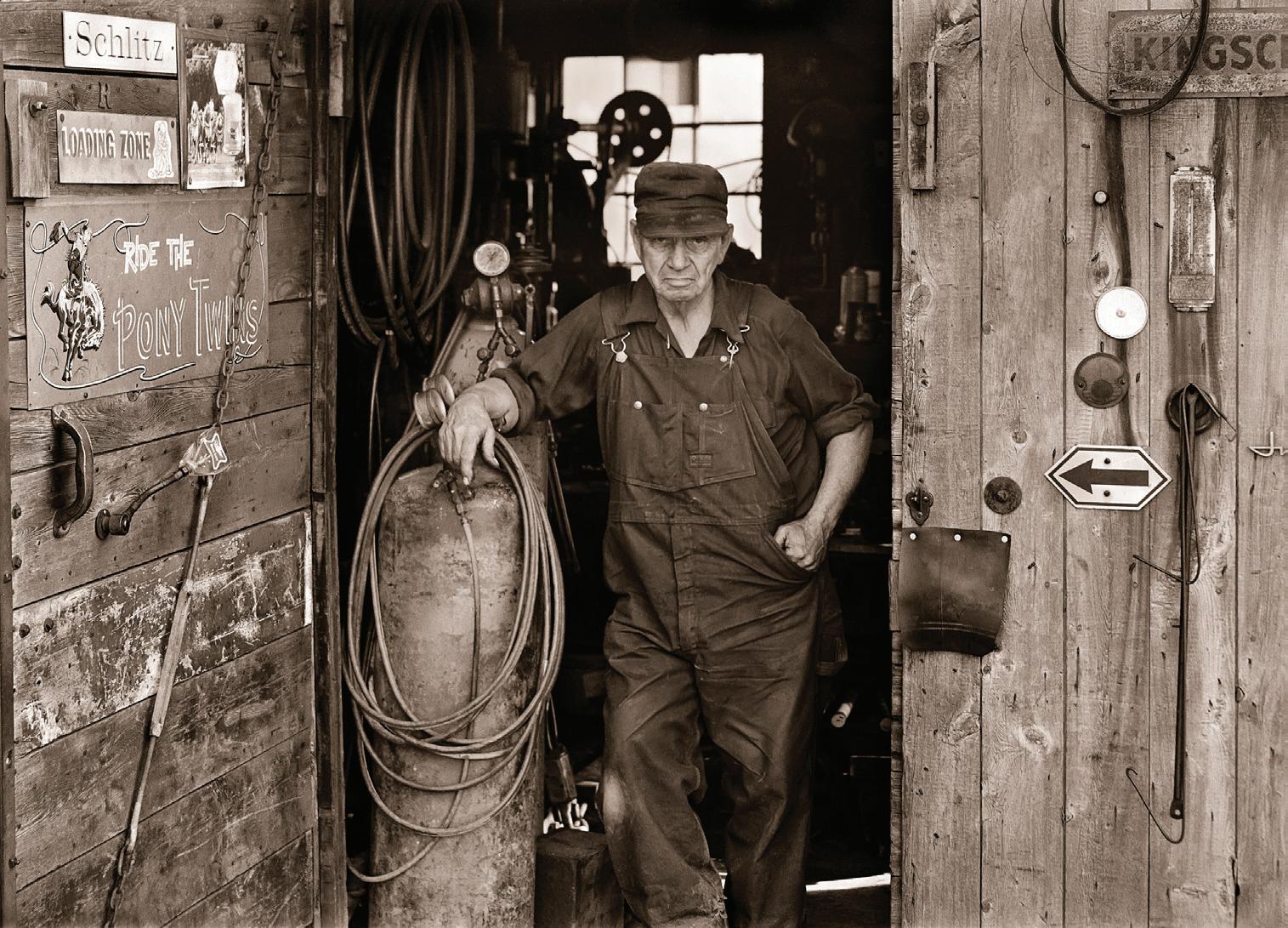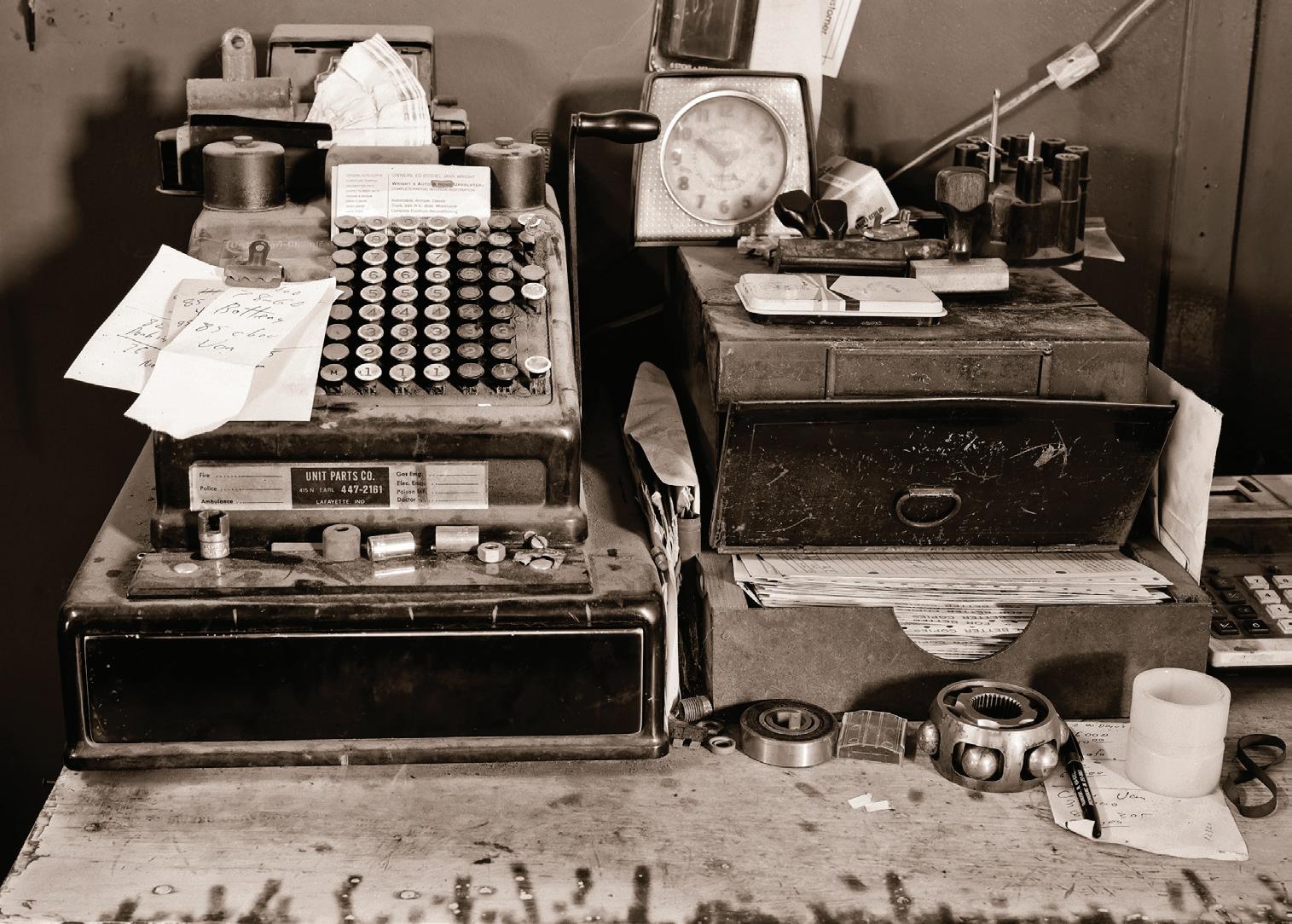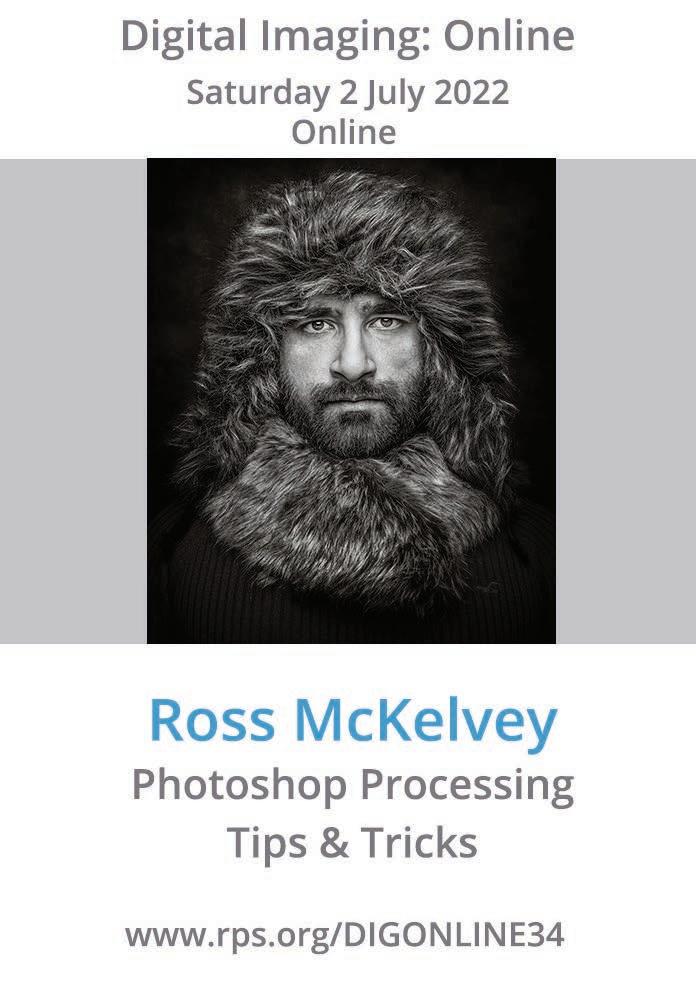
13 minute read
Critiquing critiques: Some thoughts on giving and receiving feedback
gears
Richter’s Garage, Yoakum, Texas 1994
He said, “There ain’t nothin’ to takin’ ‘em apart.” Then he looked at me from the corner of his eye and smiled a knowing smile.
BROOkS JENSEN
publisher and editor of LensWork magazine, Brooks Jensen shares his thoughts about offering critique of photographic works which was an editorial in a recent issue of LensWork
Those of you who are members of LensWork Online perhaps have seen the section called Voice of the Masters - a project that I started years ago to convert all the cassette recordings I’ve gathered over the years from lectures, interviews, workshops, and critique sessions. I’m now in the process of converting all of those archive recordings into MP3 files and posting them at LensWork Online. That’s the background for this Editor’s Comments about critiquing critiques. Part of the reason that I made all of these audio recordings over the years was so that I could re-listen to the comments that workshop instructors made about my work, knowing that in the moment of receiving the critique, my mind is racing and probably missing important points. Sometimes, in my naive youth, I’d be defensive in my response to their comments, or sometimes busy thinking about what they’d said, and so miss what they said subsequently. I knew by recording these critiques on audio cassette and re-listening later, I’d probably hear subtleties and make connections that I wasn’t able to make in the moment.
Having your work critiqued is a learning opportunity unlike any other. One of the things that is very interesting to me as l’ve gone back and listened to these recordings now, sometimes 30 or 40 years later, is listening for how the instructor conducts a critique. After listening to a lot of these recorded critiques, I’ve observed that nine out of ten instructors doing critiques offer the same kind of feedback, that is to say, they make comments of a technical nature about the work. They’ll say, “Well, this one’s a little dark; this one needs more contrast; with this one it’s too bad you don’t have more on the top.”Particularly in the 1980s and 90s when I was experimenting with toners, there were a lot of comments about the brown toner I used - all technical discussions. I learned from one of the best photography critique instructors of our generation - David Bayles - that those are not necessarily the comments that are going to drive the project forward. They may drive the technological interpretation of a project; they may drive our knowledge about craft and technique; but they don’t necessarily help with the content of a project.
Content and critiques
Bayles never talked much about craft or technique in his comments. It’s not that he would ignore it, but if there were technical issues with the printing or he had comments about negative development, he definitely offered those- but that wasn’t the limit of what he offered. It was the limit of nine out of ten critiques that I’ve observed over the years.
Here’s a good example. I offer this because I know a lot of you are involved in teaching workshop programs, or you’re part of a photo group of peers where you’re making comments about each other’s work, etc. I offer these comments about critiques because I’m hopeful that they may contribute something that will improve your experience in not only conducting these critiques, but receiving critiques from other. I was having a critique done of the Made of Steel work that eventually became my book about greasy machine shop guys, their tools, and places where they worked. By way of background about the project, I explained---and you can hear this on the tape--- that I was engaged in this project primarily because of my grandfather. He was a machine shop guy, one of these greasy tool people. He made such an impact on my life that I felt I wanted to do this project partly because of my relationship with my grandfather and partly because I saw this way of life disappearing. I wanted to capture it photographically and tell their story. This eventually led to the use of image and text --- part of the story told visually, and part of it verbally. As was so often the case, the workshop instructor was commenting on the brown toner, the relative values of light and dark, contrast and cropping, and the obligatory comments about composition. “Too bad you didn’t move to the left here a little bit, burn down on the right side here” etc. Not once did he ask me about my grandfather; not once did he ask me about the ideas I was trying to get across in the project that was inspired by my grandfather; not once did he ask what I might want the audience to take away after they’ve seen the work and read the text; not once was it discussed about what I might want them to take away about these guys or their way of life. As I’ve been converting these old cassetterecorded critiques, I’ve found a couple dozen critiques of this work in various settings. Not once did anyone ask any questions about the content of this project. In my way of thinking, the content of a project is the most important part of any critique! The content of my project is not the brown tones that I used or how I printed on gelatin silver paper. It’s not the fact that I used text to supplement the images. All of that is only the media I was using to try to say something about these guys, and their disappearing way of life. It’s their life that, to me, was the content. We all know that content is king, but few make comments about content in a critique. Offering comments on someone’s work in a critique session - formal or informal - should explore technique in a sort of reverse engineering way. Does this technique make the content visually stronger? The 90% that is the meat and potatoes of a critique is ... Are you getting across in the images what you intend to get across? That is to say, what is the core idea, emotion, or content that you’re trying to express? Can you distil that into its essence and then analyze whether or not that is actually coming through in your photograph or project? I’m a fan of the critique technique where you simply express in one word what you get out of the project. What is the emotion? What is the feeling? What is the mood? What is the question that you have when you look at a body of work? If you can distil that to one word, or maybe at most one sentence, then the creator of the work has the opportunity to distinguish for themselves whether or not what you received is what they intended. Or did you receive something that didn’t have anything to do with what they intended? Or did you get the wrong message about what they intended? That, to me, is the true function of doing a critique in a workshop or a teaching session. Yes, a critique is an opportunity to learn about technology and about post-processing decisions, but in relationship to what end? I tend to think that all processing decisions, all cropping decisions, all subject decisions are a function of what the objective is, what the content is, what it is that you want to say, and how can you determine if you’ve said

Standing drill bits
Ellensburg, Washington 1986
Two weeks after I photographed this metal shop, it burned to the ground. Welding sparks splattered on the wooden floor, they said.

Joe Sasak
“Oh, dat. I don’t t’row dat away. We use dat yet. We can still make sump in’ outta dis guy. You can make a collar outta dis one yet - bore the t’read out - cut dis flat - maybe cut deese here corners off yet.” He thought some more during a pause, ‘’I could make a smaller nut outta dat yet, too. Never t’row anything away,” he advised, you never know when you might need it.” There was another thoughtful pause after which he added, “Or if you’ll be able to find it”.
it correctly, powerfully, convincingly, persuasively? If you don’t have any idea what it is that you want to say, the first thing that has to be explored in a critique session is what is the photographer’s intent? Does that come through? And if it does, what elements of the images or the project are the strongest ones that bring that content through? And can we find ways to do more of that in a project to make it stronger and more powerful and more communicative? And if there are elements of the project - as it exists in the critique phase - that are not enhancing that intended outcome, then how can we change those in order to make them stronger?
Reverse engineering
I don’t think you can answer questions like, Is brown tone the right tone for this project? unless you first know what it is you’re trying to communicate. High contrast, low contrast, cropping tightly, cropping loosely, black-and-white or color, shallow depth of field, large depth of field - these are all decisions that have to be made in the technical aspect of creating a photographic image or project that are a function of what the final outcome is hoped or intended to be by the creator. If you don’t know that, how do you proceed? There’s no way you can possibly reverse engineer a project in terms of post-processing decisions or media decisions or any of that until you first have an idea of what the project or image is all about. And if a photographic project isn’t about some content, some message, some emotion, mood, questions, theory, dream - if it doesn’t have some content that drives all other decisions you’ll just flounder around the edges, dabbling with technical options without direction.
Intentions
In the making of a photographic image or project, it can’t be good or bad except in relationship to what it is that you’re intending to do. So the first thing to figure out in any critique session is what is the photographer intending to do? That’s more difficult than it sounds, because most of us who are photographers are not particularly verbal people. That’s why we’re involved in photographywe’re visual thinkers. When you ask a photographer “What do you want me to walk away with after looking at your work?” most of the time, in my observations, they’ll have a difficult time answering. Explaining that requires verbal skill, something that not all of us have because, as I say, we’re visual people. The first challenge when leading a critique session is to try to help the photographer flesh out in words what it is that they’re hoping to accomplish. That’s a talent possessed by all the best workshop instructors or teachers. Their role is in leading, guiding, coaxing, nudging, trial ballooning ideas so that the photographer can become more aware of what their intentions are for the image or the project. Intentions exist, but uncovering them is a challenge. Then, once the intentions are firmly established (which is most of the work in my way of thinking), then the question simply becomes Are the techniques employed and the result produced consistent with that objective? This is my mission when I do portfolios reviews like at Houston FotoFest or Photolucida. I’ll talk with the photographer and learn what it is that they’re hoping their body of work accomplishes. Then I try to give them feedback about what I see is possibly a disconnect between what they’ve said they want the work to accomplish and what the work feels like it actually accomplishes. My role as a reviewer is to try to show them the strengths in the project as it is produced - or as it has been produced up to this point- relative to what they’ve said they want to accomplish. Every project or image is a result of those decisions

Cash register
Sedalia, Indiana 1989
He looked like Custer with long, flowing white hair and moustache. The register was empty. He kept all his money in his pocket.
the artist has made. Those decisions either enhance the content they were hoping to communicate or detract. Knowing these consciously in relation to their (often unstated) goal, they can maybe do more of those things that enhance and let go of some of the ideas that aren’t working so successfully. There’s an art to doing a critique. Whenever I find the workshop instructor or the teacher is focused primarily on the technical aspects of producing the image, that tells me that individual is not in touch with the content of the work. Perhaps they just don’t ‘get it.’ Or maybe their personal process is so focused on processing images and all of the technical steps involved in photography that they just don’t take the time to develop the sensitivity necessary for effectively commenting on another’s work. I might even go so far as to say the reviewer lacks the compassion to understand what it is that the photographer is wanting to accomplish with their work. A lot of times, by the way, this can become complicated because the photographer can be resistant to the idea that they’re trying to communicate anything. It’s become somewhat fashionable in the art world to deny the idea that there is intent in the artist. Instead, any way you want to interpret their work is fine with them. Hogwash. I just don’t buy that. If the artist puts up that kind of a resistance and says that they don’t have an intent then the challenge of the workshop instructor is to be clever enough to try to coax the intent out of the unwilling photographer who may not even be aware that they have an intent! The bottom line is this: all of us at some point in time in our photographic life have been given the opportunity to make comments on people’s work. This request to offer comments on someone’s artistic process is a tremendous responsibility. We should try to help them in the most meaningful way. The most meaningful way is not going to be technical expertise about dodging and burning, contrast or color balance. All that kind of stuff can be learned on YouTube with a gazillion different training courses and videos. Developing the ability to have something to say, and then thinking through the ways to say it most powerfully and most effectively - those are much more difficult things than mere technical excellence. This is where as a workshop instructor or as a teacher - or even just as a photo buddy making comments on your friend’s work - we can really make a serious contribution to the photographer’s process and to their progress and growth as an artist. Critiques can be a lot more than technical training, but can clarify why a technique is best to be used or best to be avoided. It’s not the how, but rather the why. Critiques are about learning how to think and communicate - and how to get in touch with the deeper aspects of your work. The more you do that, the easier it becomes and the more you figure out how to do it. That can have a tremendous impact on future work and makes it easier and easier to do better and better work. Isn’t that a nice contribution you can make in offering comments about someone’s artwork? Those are some of my comments about how to do critiques and how you can make a positive contribution in a critique. If you’re one of these people who tend to focus critiques on technical aspects like cropping and dodging and burning and all that kind of stuff, maybe I’ve given you something to think about that you could add to your commentary that will be even more useful and more compassionate to the photographers who entrust you with making comments about their work l










